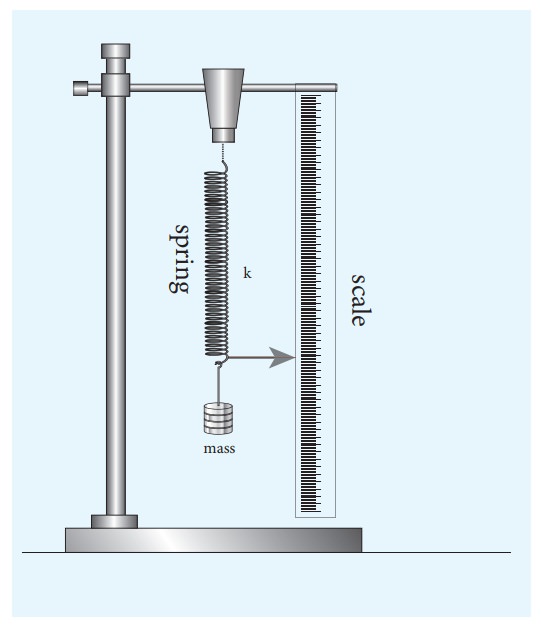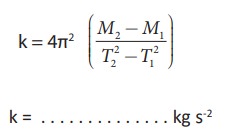Physics Laboratory Practical Experiment - Spring Constant of a Spring | 11th Physics : Practical Experiment
Chapter: 11th Physics : Practical Experiment
Spring Constant of a Spring
SPRING CONSTANT OF A SPRING
AIM
To
determine the spring constant of a spring by using the method of vertical
oscillations
APPARATUS REQUIRED
Spring,
rigid support, hook, 50 g mass hanger, 50 g slotted masses, stop clock, metre
scale, pointer
FORMULA
Spring
constant of the spring k

where
M1,
M2 → selected loads in kg
T1,
T2 → time period corresponding to masses M1 and M2
respectively in second
DIAGRAM

PROCEDURE
·
A spring
is firmly suspended vertically from a rigid clamp of a wooden stand at its upper
end with a mass hanger attached to its lower end. A pointer fixed at the lower
end of the spring moves over a vertical scale fixed.
· A suitable load M (eg; 100 g ) is added to the mass hanger and the reading on the scale at which the pointer comes to rest is noted. This is the equilibrium position.
·
The mass
in the hanger is pulled downward and released so that the spring oscillates
vertically on either side of the equilibrium position.
·
When the
pointer crosses the equilibrium position a stop clock is started and the time
taken for 10 vertical oscillations is noted. Then the period of oscillation T
is calculated.
·
The
experiment is repeated by adding masses in steps of 50 g to the mass hanger and
period of oscillation at each time is calculated.
·
For the
masses M1 and M2 ( with a difference of 50 g ), if T1
and T2 are the corresponding periods, then the value M2 –
M1 / T22 – T12 is
calculated and its average is found.
·
Using the
given formula the spring constant of the given spring is calculated.
OBSERVATIONS

CALCULATION
Spring
constant of the spring k

RESULT
The spring constant of the given spring k = . . . . . . . . . . . . kg s-2
Related Topics